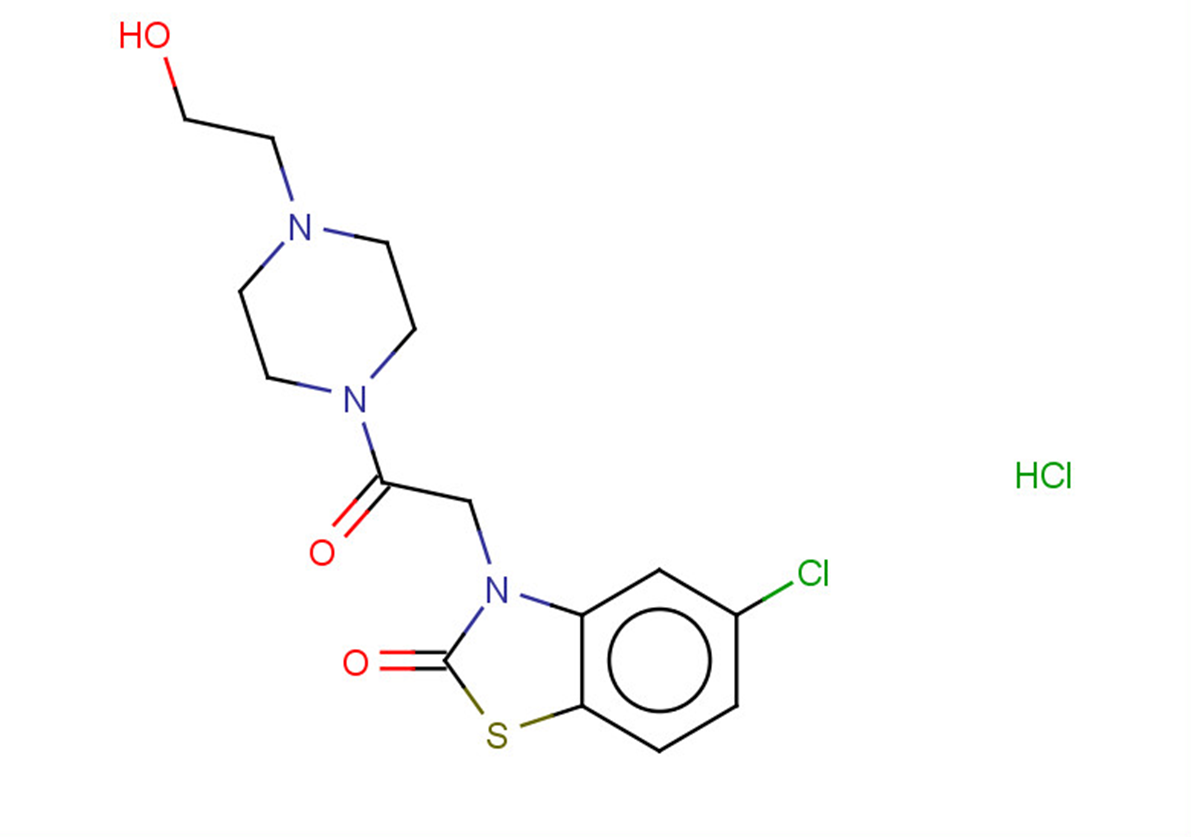
Tiaramide hydrochloride
CAS No. 35941-71-0
Tiaramide hydrochloride( tiaramide | FK-1160 | FK 1160 | FK1160 | NTA-194 )
Catalog No. M24316 CAS No. 35941-71-0
Tiaramide hydrochloride is an anti-inflammatory drug that inhibits the action of mediators released from mast cells and has direct smooth muscle relaxant properties.
Purity : >98% (HPLC)
 COA
COA
 Datasheet
Datasheet
 HNMR
HNMR
 HPLC
HPLC
 MSDS
MSDS
 Handing Instructions
Handing Instructions
| Size | Price / USD | Stock | Quantity |
| 5MG | 147 | In Stock |


|
| 10MG | 210 | In Stock |


|
| 25MG | 300 | In Stock |


|
| 50MG | 452 | In Stock |


|
| 100MG | 655 | In Stock |


|
| 200MG | Get Quote | In Stock |


|
| 500MG | Get Quote | In Stock |


|
| 1G | Get Quote | In Stock |


|
Biological Information
-
Product NameTiaramide hydrochloride
-
NoteResearch use only, not for human use.
-
Brief DescriptionTiaramide hydrochloride is an anti-inflammatory drug that inhibits the action of mediators released from mast cells and has direct smooth muscle relaxant properties.
-
DescriptionTiaramide hydrochloride is an anti-inflammatory drug that inhibits the action of mediators released from mast cells and has direct smooth muscle relaxant properties.
-
In Vitro——
-
In Vivo——
-
Synonymstiaramide | FK-1160 | FK 1160 | FK1160 | NTA-194
-
PathwayOthers
-
TargetOther Targets
-
RecptorOthers
-
Research Area——
-
Indication——
Chemical Information
-
CAS Number35941-71-0
-
Formula Weight392.3
-
Molecular FormulaC15H19Cl2N3O3S
-
Purity>98% (HPLC)
-
Solubility——
-
SMILESOCCN(CC1)CCN1C(CN(c(cc(cc1)Cl)c1S1)C1=O)=O.Cl
-
Chemical Name——
Shipping & Storage Information
-
Storage(-20℃)
-
ShippingWith Ice Pack
-
Stability≥ 2 years
Reference
1.Takano S. Inhibition of phospholipase A2 by tiaramide in rabbit platelets. Jpn J Pharmacol. 1985 Nov;39(3):307-16. PubMed PMID: 3005729.
molnova catalog



related products
-
Isoliquiritin
Isoliquiritin, liquiritin and isoliquirigenin inhibits the p53-dependent pathway and shows crosstalk between Akt activities.
-
Debrisoquin hydriodi...
Debrisoquin hydriodide is a chemical compound.
-
Methyl stearate
Methyl stearate is found in cloves. Antifoaming agent and fermentation nutrient.



 Cart
Cart
 sales@molnova.com
sales@molnova.com


